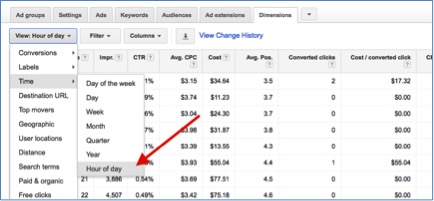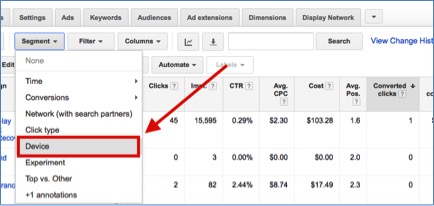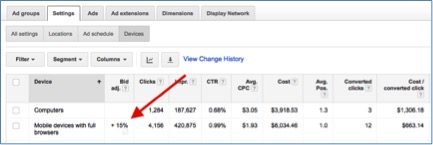In an industry like PPC, the results of marketing campaigns are right there in front of you and for everyone to see. There’s nowhere to hide in terms of performance, and we are judged on these bottom line numbers. While many of these front-end metrics (CTR, CPC, Avg. Position, etc.) lead to better overall performance on the back-end, CPA (cost per acquisition) and profit, when all is said and done, are most crucial to our accounts.
One of the most important tasks in PPC is taking the time to sit down and brainstorm different strategy tactics to lower that overall CPA and take the account to the next level. In most cases, you’ll want to achieve a lower CPA without reducing your overall conversion volume too much, which is sometimes easier said than done.
In this article, we’ll be discussing a few different tactics to reduce overall CPA within. Some may make sense for your situation while others may not, but the intent is to start thinking outside of your normal daily routine and spark some eye-opening analysis to help overall CPA performance.
Custom Ad Scheduling

One possible way of reducing CPA is identifying CPA performance by time of day. For each campaign, you can run a report in the “Dimensions” tab that will show you CPA performance by time of day, as well as day of the week. If you’re concerned with choking volume by cutting back too much, I’d recommend testing different bid modifiers first, prior to cutting high CPA areas completely. For example, say a strong CPA within your account is $45. The 9am hour is producing a $55 CPA but with good volume. In a situation like this, you should test a bid modifier of around -10% to see how performance adjusts in that time frame. If that doesn’t do the trick, test -20% and so on. The same goes for days of the week. A lot of times, overall performance fluctuates on the weekends. If that’s the case in your account, try testing different levels of bid modifiers for those days prior to cutting it completely.
Landing Page Optimization
Landing page optimization is something that occasionally gets lost in the weeds of the work involved in a PPC account. While a lot of our focus is on the metrics we see within the engines, the pages we drive traffic to has a tremendous impact on overall conversion rates and CPA.
Here are a couple questions to consider when analyzing your landing pages and where to drive traffic:
- Are you driving all traffic, regardless of the campaign, to the same landing page?
- Are there different, more precise landing pages that may boost overall conversion rates?
If you answered yes to either of these two questions, you may want to consider reevaluating your strategy. As is the case with everything in digital marketing, you should always be testing for improvement. Consider running a 50/50 split in traffic with your current page versus a more precise landing page and track the results. You may find a way to boost conversion rates and lower CPA with a simple switch of where you’re driving traffic.
Device Bid Modifiers
At this point, we’re all aware of just how big mobile is in the realm of marketing. The percentage of traffic coming from mobile devices has grown exponentially over the past 5 years. The difficult part is how that exactly fits into your PPC account. For some, mobile drives the majority of the volume and at a lower CPA than desktop. For others, mobile just doesn’t fit their business model as seamlessly.
Even with all the strides mobile devices have made, some people are just more comfortable making important decisions/purchases on a desktop computer. As marketers, we need to assess how our target market feels about converting and where they’re most comfortable. Luckily, that information is right in front of us and allows us to adjust our campaigns on the fly.
The screenshot below shows you how you can segment performance by device within the Google AdWords interface.

Once you segment performance, you can then see how each campaign performs on desktop, mobile and tablet devices. With that information at hand, you’ll be able to set bid modifiers for mobile devices (up to +300%, down to -100%) to reach your target CPA goal. The screenshot below shows an example of a mobile bid modifier, in this case +15% for mobile traffic.

Honorable mentions for CPA improvement: More precise ad copy messaging (especially for ecommerce accounts including pricing) and negative matching through the search query reports.
Conclusion
The great thing about PPC is how much data is at our fingertips each and every day. While sometimes that is overlooked by our daily routines and different tasks that need to be completed, it is important to take advantage of this data to have a healthy, successful account. When you feel like you’re in a rut in terms of new ways to analyze your account, it’s important to set time aside to brainstorm (alone or with team members) and think outside the box.
Ultimately, CPA performance within the account is what we’re all judged upon at the end of the day. While all of those front-end metrics are factors and help to boost overall performance, driving conversions at a profitable, cost-efficient price is crucial. It’s our responsibility to strategize and come up with different ways to analyze CPA metrics and continue improving performance within our account.



